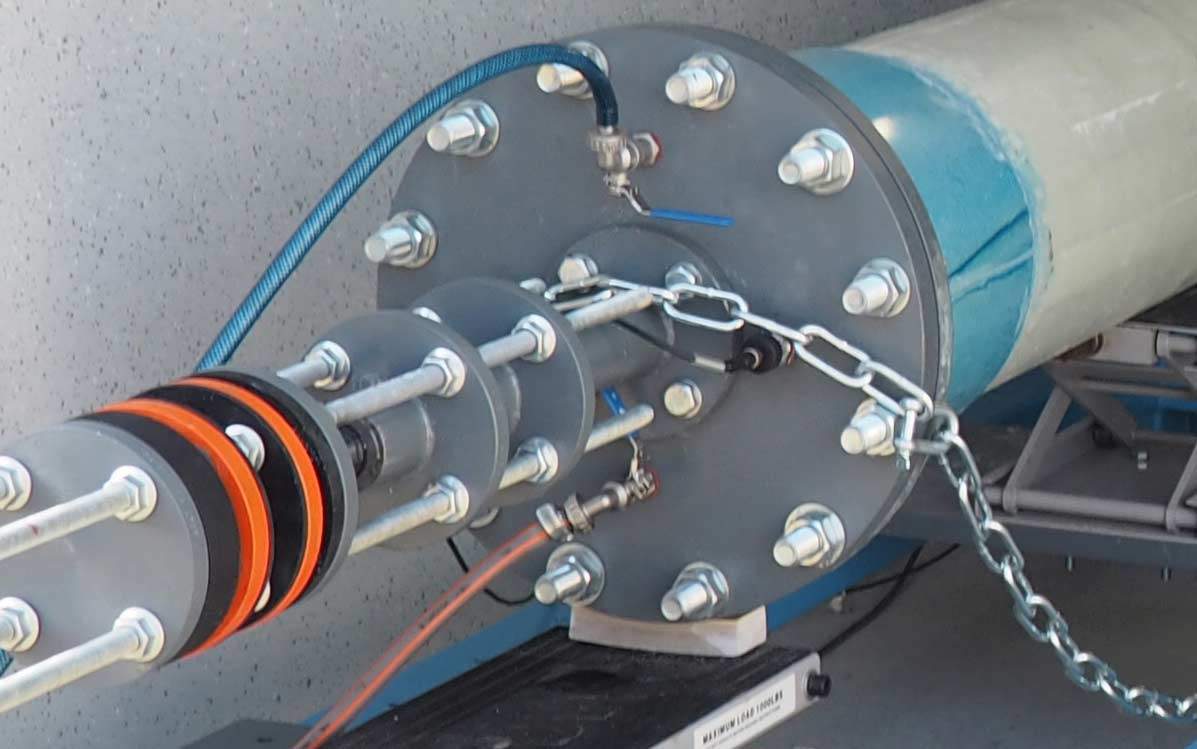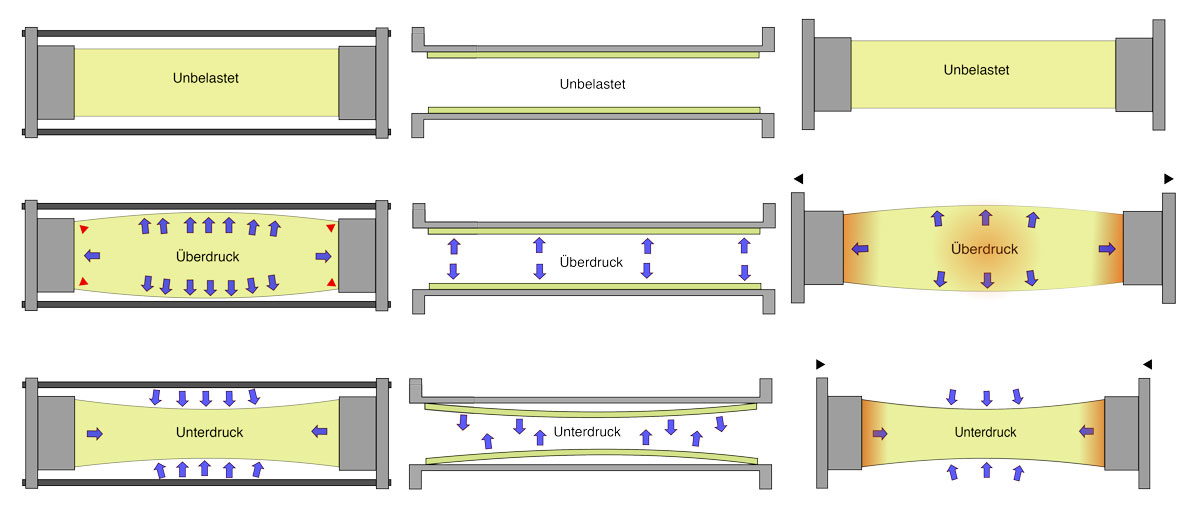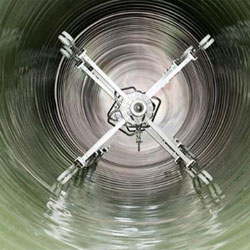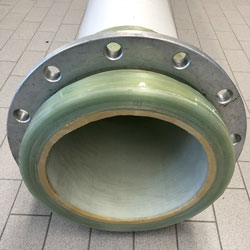In 2017, Siebert + Knipschild developed a system that, for the first time, is capable of testing systems under worst-case conditions in over- and underpressure. The Dynamic Load Test is an approval procedure for
- GRP pressure pipes
- Connection systems for pressure pipes
- Renovation methods such as hose lining for pressure pipes
- and much more.
The special thing about it is: With the Dynamic Load Test (DLT), complete rehabilitation systems for pressure pipelines can prove their suitability under pressure surge loads for the first time – even in the underpressure range. The plant was commissioned at Siebert + Knipschild in cooperation with a working group of the German Society for Trenchless Technologies (GSTT). It was supported by the ZIM, a nationwide, technologically and sectorally unrestricted funding programme for SMEs.
Fields of Application
Testing Conditions at the DLT Device
Pressure Range: -0,9 bar to 10 bar
Cycles: 107
Frequency: up to 2 Hz
Media: Tap water, other media are usable
Size of Samples: DN 200 to DN 500
Measured variables: Pressure, material expansion

What are the Advantages of the Dynamic Load Test?
- In contrast to methods in which only the material quality is determined by means of characteristic values, DLT can also test joint and repair methods in existing systems as a component test method.
- The system enables the investigation of complex geometries such as T-pieces, bends and liner connection systems. The components can be tested both sliding on one side and force-fit. Testing procedures in connection with an old pipe is also possible.
- How the material of a pressure pipe pipe liner behaves over a period of several months can be determined by evaluating data from strain gauges (DMS), which record the material strain in both the longitudinal and circumferential directions. This also makes it possible to detect material damage that begins during the test in progress.
- Following the component test, further tests of the components subjected to pressure cycling provide important information as to whether the material changes over the test period and whether damage mechanisms are applied. The formation of possible microcracks can be proven by microscopic examinations and tests of the mechanical properties. These test results thus also provide valuable information for the further development and dimensioning of systems.
- Experience to date shows that testing places high demands on the systems. Several pipe liner systems have now completed the DLT procedure. The tests carried out so far have clearly shown which material changes can occur in components under the conditions of pressure pipeline networks.

Your Contact
Dipl.-Ing. Andreas Haacker is managing director of the testing, certification and monitoring body Siebert + Knipschild GmbH. The company is the largest testing institute in Germany specialising in CIPP-Systems with approx. 7000 hose liner tests per year. As a certification body, the company monitors most CIPP manufacturers in Germany. Andreas Haacker is a member of the expert committee of the DIBt (Deutsches Institut für Bautechnik) as well as a member of various regulatory committees such as DWA, RSV, VSB, GSTT, DIN and CEN.
Do you have any questions? Please do not hesitate to contact us by phone at 040 688714-0 or by e-mail.
Experience Reports (selection)
“Exclusively through the practice-oriented testing with DLT it was possible to further develop our sleeve system Red Ex, to create correspondingly extended installation guidelines and thus to provide our customers and clients with proof of the permanent suitability of the sleeve system under pressure surge conditions.”
Martin Cygiel, Pipe-Seal-Tec GmbH & Co. KG
“It is difficult for network operators to imagine how a thermoplastic fabric hose liner system behaves under pressure cycling loads. This could be impressively seen and measured in the DLT unit. This provides security and trust for users and helps to market and establish the system.”
Peter Wegewitz, PSM Rohrsanierung GmbH
This is how first clients described the effect of the tests:
“As a system test for Hamburg Wasser, the pressure swing test is one of the most important tests within the framework of a proof of suitability for pressure hose liners. Hamburg Wasser operates more than 200 larger sewage pumping stations with pressure pipes of different lengths, some of which require rehabilitation. In order for a pipe liner system to be considered for a rehabilitation procedure, it must have passed a pressure swing test. Thus a failure of the pipe liner or the connection systems can be ruled out with a high likelihood.”
Wolfgang Buchner, Construction Office of HAMBURG WASSER







